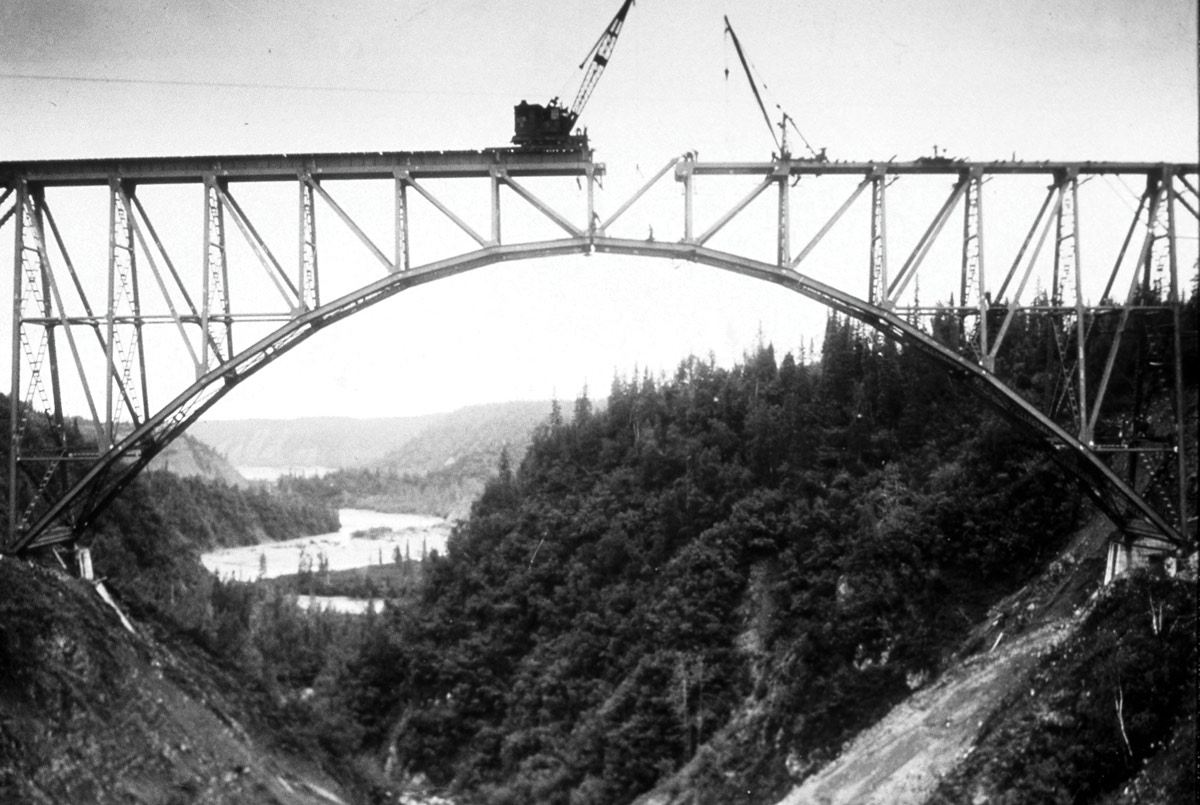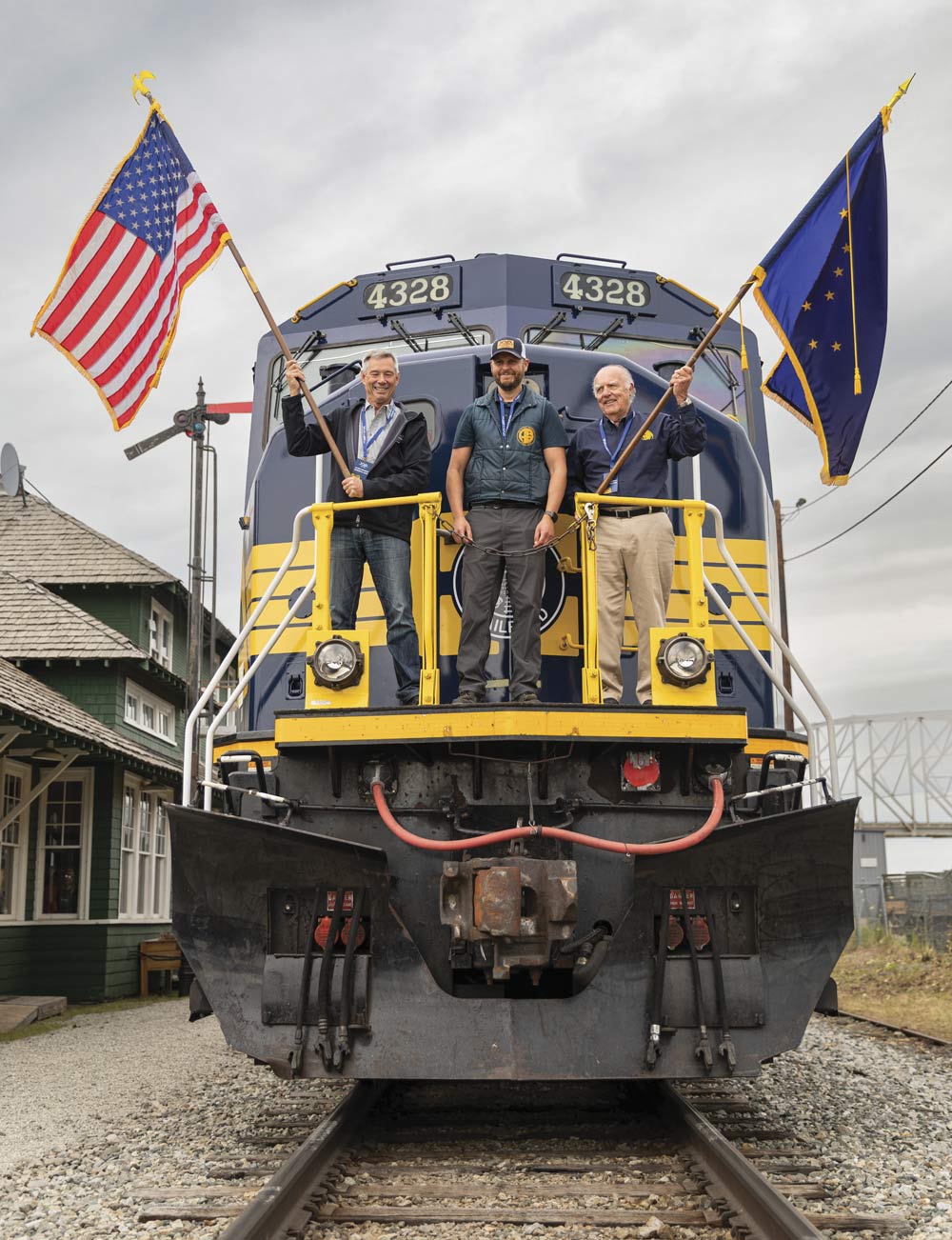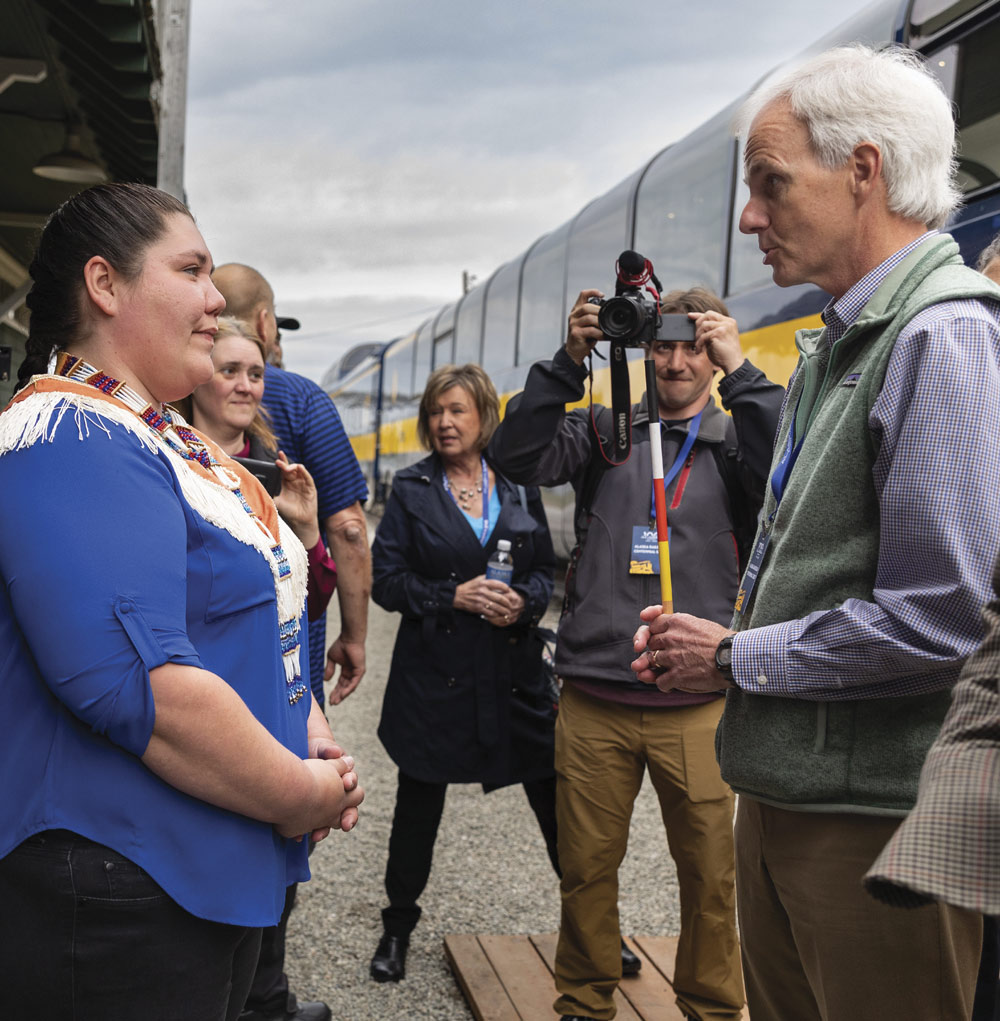hundred years in Alaska is significant,” Clark Hopp says, remarking on the centennial anniversary of the Alaska Railroad. “There’s not a lot of things in Alaska that are a hundred years old. So that milestone is always a chance to stand and look back, think about what you’ve done, and think about how you’re moving forward.”
Looking backward while planning forward is precisely what the railroad has been doing this year, says Hopp, chief operating officer with the Alaska Railroad Corporation, or ARRC. The railroad, he stresses, has been and will continue to be a vital link in Alaska’s economic development. At this summer’s public celebration in Nenana marking the anniversary, Hopp recalls, “I think it was said several times from the stage that nothing big has ever happened in Alaska in construction and transportation that hasn’t involved the Alaska Railroad.”

hundred years in Alaska is significant,” Clark Hopp says, remarking on the centennial anniversary of the Alaska Railroad. “There’s not a lot of things in Alaska that are a hundred years old. So that milestone is always a chance to stand and look back, think about what you’ve done, and think about how you’re moving forward.”
Looking backward while planning forward is precisely what the railroad has been doing this year, says Hopp, chief operating officer with the Alaska Railroad Corporation, or ARRC. The railroad, he stresses, has been and will continue to be a vital link in Alaska’s economic development. At this summer’s public celebration in Nenana marking the anniversary, Hopp recalls, “I think it was said several times from the stage that nothing big has ever happened in Alaska in construction and transportation that hasn’t involved the Alaska Railroad.”
“We had about 800 dignitaries, local citizens, residents from around the state of Alaska, visitors, and actually, twenty engineers from Canada and Europe that came to celebrate with us that day,” ARRC External Affairs Director Christy Terry recalls. And while visitors came from around the world, she explains that it was a fully Alaskan event, and that both the City of Nenana and the Nenana Native Association were vital to its success. “We are very proud of having a community-centric celebration,” she adds.
“Christy did a fantastic job,” Hopp says. “It was an unbelievable event.”

The Alaska Railroad began carrying passengers and freight between Seward and Fairbanks that year and has done so ever since. A second line coming north from Whittier and through Anchorage was operational by 1944. The Alaska Railroad was owned by the federal government until 1983, when it passed into state hands and was placed under the oversight of the quasi-public, self-funding ARRC.
— Clark Hopp, chief operating officer, Alaska Railroad Corporation
Lindamood says that responsibility is larger than many Alaskans might realize.
“Between Anchorage and Fairbanks, we haul roughly 50 percent of the freight in that corridor, back and forth.” Among the items he listed are cement, fuel, oil field equipment, hospital supplies, bicycles, toilet paper, and more.
“We haul almost 200 trucks worth of stuff out of Whittier every week,” Lindamood says. “It’s not the vegetables that have to get here fast, but it’s the stuff that people want.”

“We are here to support and foster the development of the state,” he says.
That development comes in many ways. Along with freight, the railroad also carries passengers, which not only provides Alaskans a transportation option that is used more often than one might think, Hopp says, but it also helps support Alaska’s tourism industry. According to Hopp, this makes ARRC “the last full-service railroad in North America. We’re the last railroad that runs both passenger and freight operations. That in itself is pretty neat.”
Expansion plans include completing the 32-mile Port MacKenzie Rail Extension project and hopefully building the long-envisioned 80-mile Northern Rail Extension from Eielson Air Force Base to Delta Junction. Lindamood cites both as examples of how ARRC is key to further development in Alaska.

“And when I say we, I mean the 780 employees. And there’s a fair number of those employees who were here for the 75th anniversary. So, there’s a lot of loyalty, a lot of pride at the Alaska Railroad about what we do here. We wouldn’t have made it a hundred years without all of those employees,” he says, noting that he means all of the employees who have worked at the railroad in the past century. “This place only works because of the people who work at it.”




